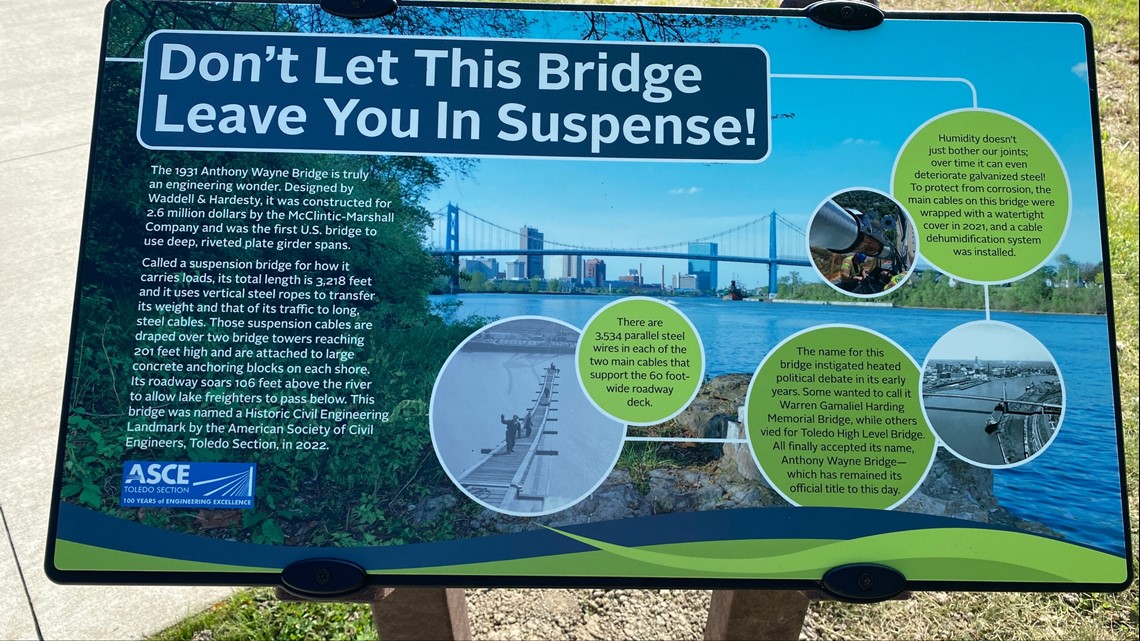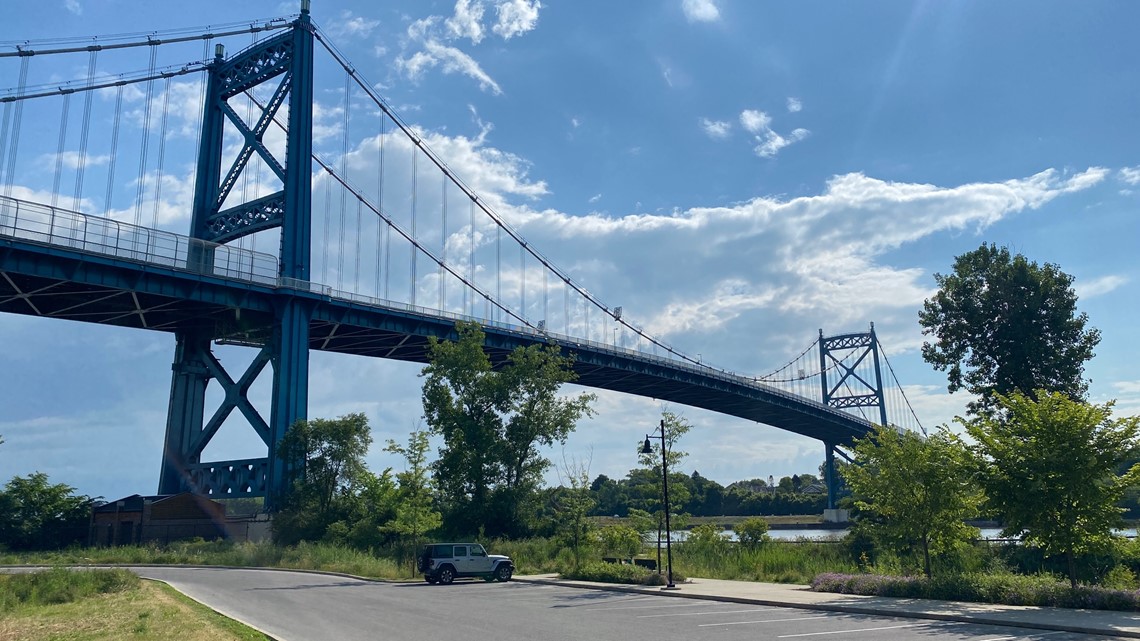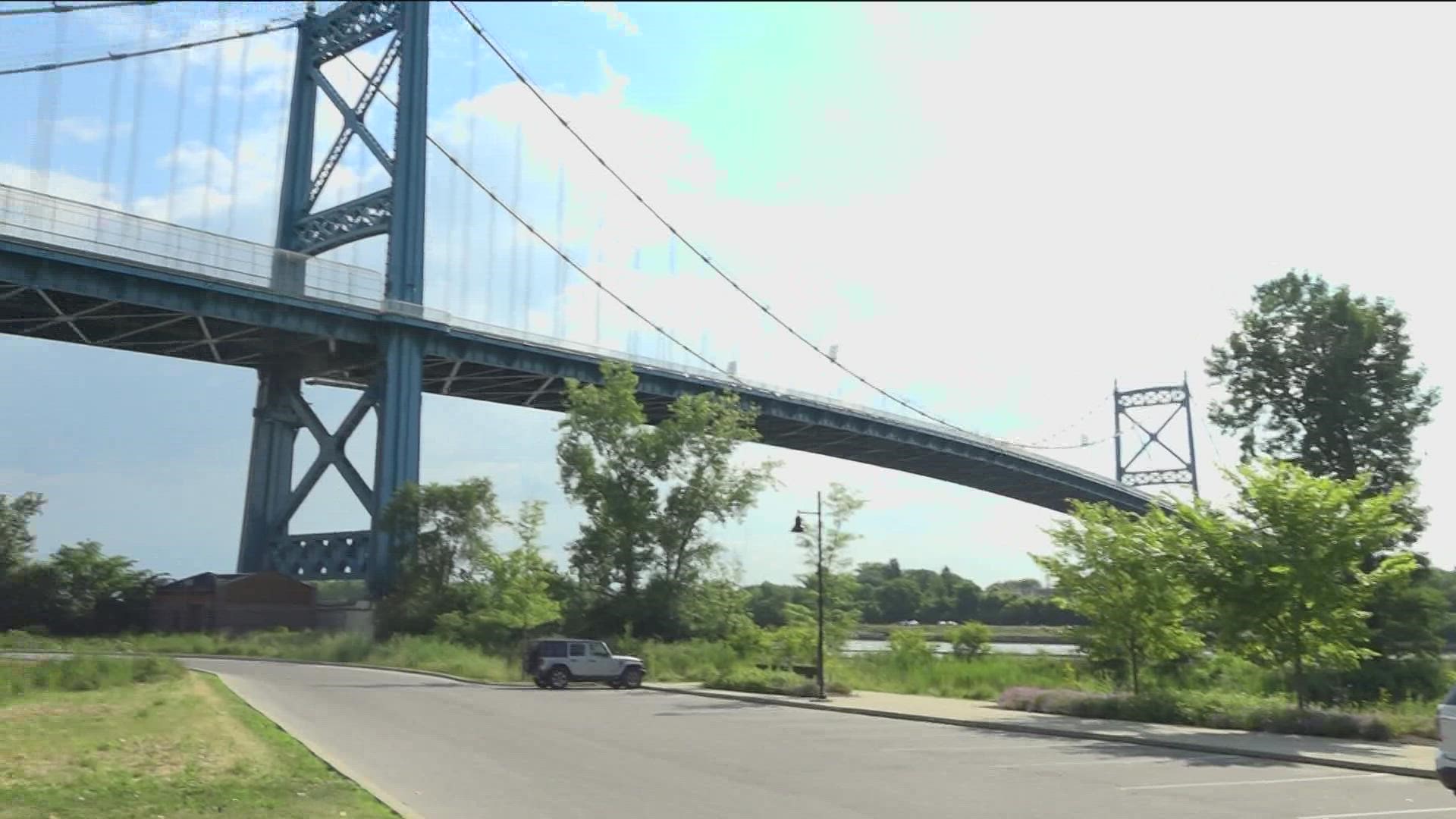TOLEDO, Ohio — It's been a Glass City landmark for more than 90 years, and now it is an officially registered civil engineering landmark as well.
It's been called many names: the Anthony Wayne Bridge, the High Level Bridge or even the Big Blue Bridge.
Today, this piece of local history was recognized by national civil engineering professionals.
Before the Anthony Wayne Bridge was opened in 1931, there was no guarantee you'd get across the Maumee River without being stopped at a drawbridge.
Which is why everyone in attendance at a dedication ceremony Wednesday morning says without the AW bridge, the Greater Toledo area would look a lot different today.
To celebrate 100th anniversary of The American Society of Civil Engineers - Toledo Section, ASCE members voted to recognize the Anthony Wayne bridge as northwest Ohio's civil engineering landmark.
A new permanent educational display was unveiled at Middlegrounds Metropark explaining how this bridge's opening in 1931 completely changed Toledo's economic outlook almost a century ago.
"Before we had a bunch of drawbridges, and we still do have a lot of drawbridges that go over the Maumee. But this really enabled commerce to really flourish in Toledo and in Northwest Ohio because it allowed an unfettered access between the east and west sides of the river," Mike Pniewski, Lucas County Engineer said.


The bridge is the only remaining suspension bridge maintained by ODOT and has seen three major rehabilitation projects.
"We have an almost one hundred-year-old piece of infrastructure that is still used today, still used by the people of Toledo today," Pniewski said. "And not only that, but we've made significant investments to keep this bridge in good shape so it will continue to serve the people of Toledo and northwest Ohio for another one hundred years."
Because its construction preceded the federal interstate highway system, the AW bridge acted as the primary artery of commerce, industry and tourism for our region for decades.
RELATED: Ohio, Michigan to receive close to half a billion dollars for water infrastructure projects
"Just think of this area without the bridge. If the bridge didn't exist this area wouldn't have developed on either side, it wouldn't have provided the connectivity, and really it would have hurt Toledo's progress over the years all the way up through today." ODOT District 2 Deputy Director Pat McColley said.


The Anthony Wayne bridge was constructed entirely from local dollars, with no help from the state or federal governments.
Toledo voters approved a three million dollar bond measure in 1928 to raise taxes and get the bridge built.
Adjusting for inflation, that would be like approving an over 60 million dollar project today.
More from WTOL 11

